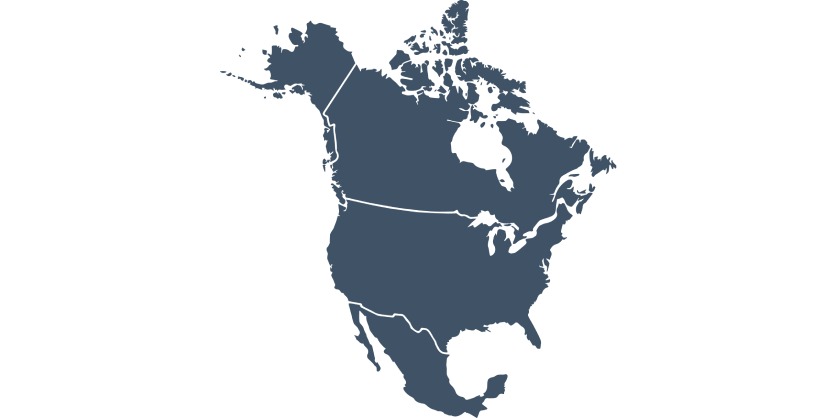Industry Insights: January 2025 – Canada’s Strategic Response to Evolving Trade Policies in 2025
January 23, 2025

Canada’s Strategic Response to Evolving Trade Policies in 2025
As we step into 2025, Canada’s industrial sectors face significant challenges and opportunities shaped by a dynamic global trade environment. From addressing the implications of international tariffs to securing critical mineral supplies, Canada is adopting strategic measures to navigate these shifts while ensuring economic resilience.
In this article, Rittal Ltd. explores how evolving trade policies are impacting Canada’s industries and the strategies being implemented to maintain competitiveness on the global stage.
Understanding the Trade Landscape: Challenges Ahead
1. Tariff Tensions and Market Access
Increased global protectionism and shifting trade agreements have introduced new tariff challenges for Canadian industries. Sectors such as manufacturing, automotive, and technology are particularly affected by higher costs for imported materials and limited market access for exports.
For instance, recent discussions about imposing 25% tariffs on Canadian imports have prompted manufacturers to reevaluate their supply chains and consider local production to mitigate potential disruptions (WSJ).
2. Securing Critical Minerals
Critical minerals, such as lithium, cobalt, and rare earth elements, are essential for manufacturing batteries, electronics, and renewable energy technologies. Recognizing the strategic importance of these resources, Canada has initiated efforts to develop domestic processing hubs and incentivize local extraction (Financial Times).
These initiatives align with broader global trends toward renewable energy and decarbonization, underscoring the importance of innovation and resilience in industrial operations.
Canada’s Strategic Measures: Building Resilience
1. Strengthening Domestic Supply Chains
To counter the challenges posed by international trade policies, Canadian businesses are investing in domestic production capabilities. By embracing automation and advanced manufacturing, industries can create more robust supply chains that are less vulnerable to external disruptions.
This shift highlights the importance of infrastructure that integrates seamlessly into modern production systems, enabling companies to maintain efficiency while localizing operations.
2. Expanding Trade Partnerships
Canada’s efforts to diversify trade partnerships through agreements like the Comprehensive and Progressive Agreement for Trans-Pacific Partnership (CPTPP) are reshaping its global trade strategy. These partnerships are opening new doors for Canadian products, particularly in advanced manufacturing and clean energy, while reducing dependence on traditional markets such as the United States (Canada.ca).
Such diversification is critical for fostering long-term growth and highlights the value of adaptable manufacturing practices that meet the varied requirements of international markets.
Implications for Canadian Industries
1. Driving Innovation Through Trade
Adapting to evolving trade policies is pushing Canadian industries to prioritize innovation. Automation and digital tools, such as IoT-enabled systems, are now essential for streamlining operations and maintaining competitiveness. These technologies help businesses optimize supply chains, enhance efficiency, and respond quickly to changing market demands.
The integration of advanced infrastructure that supports this technological growth is becoming a defining factor for successful operations in 2025 and beyond.
2. Balancing Sustainability and Competitiveness
Sustainability is becoming increasingly important in global trade, with many markets prioritizing eco-friendly products. Canadian manufacturers are integrating sustainable practices, such as using recycled materials and renewable energy, to meet these demands while maintaining competitiveness.
Investments in green technologies and compliance with environmental regulations are positioning Canadian industries as leaders in sustainable trade.
Looking Ahead: Opportunities in 2025
While evolving trade policies bring challenges, they also offer significant opportunities for growth and innovation. Canada’s focus on strengthening domestic supply chains, fostering international partnerships, and integrating sustainability into operations underscores its commitment to long-term resilience.
As industries navigate these complexities, collaboration between technology providers, manufacturers, and policymakers will be essential. With the right partnerships and infrastructure, Canada is poised to remain competitive and thrive in the global marketplace.
Related Story
3 Things Manufacturers Should Know About Industry 5.0
While many manufacturers are still embracing the principles of Industry 4.0, the next evolution, Industry 5.0, is already beginning to take shape. Unlike Industry 4.0, which was a giant leap forward in automation and digitalization, Industry 5.0 represents a reconsideration of how smart technology platforms can work alongside humans. This includes technologies like artificial intelligence (AI), the Industrial Internet of Things (IIoT), and machine learning, which can enhance the creativity and problem-solving skills that human intervention brings to manufacturing.
Although Industry 5.0 may take time to fully develop in the U.S., its principles are gaining traction. Manufacturers should understand these concepts now to better prepare for future changes. Rittal Ltd. explores the three key things manufacturers should know about Industry 5.0 and how it will change modern manufacturing.




